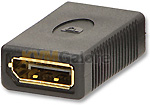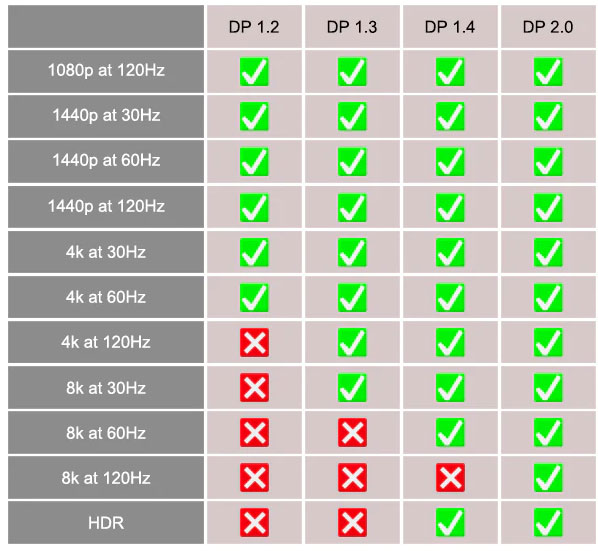DisplayPort
Posted on December 19, 2012 by KVMG-CMS | 0 comments


DisplayPort (DP) is a digital display interface developed by a consortium of PC and chip manufacturers and standardized by the Video Electronics Standards Association (VESA). It is primarily used to connect a video source to a display device such as a computer monitor. DisplayPort is able to transmit audio and video simultaneously, although each can be transmitted without the other.
Royalty-free, DisplayPort was designed to replace VGA and DVI, and it is backward-compatible with them – as well as HDMI - through the use of adapters.
Originally released in 2006, DisplayPort 1.0 supports resolutions up to 2560x1600 @ 60Hz.
In 2007, DisplayPort 1.1 added support for Dual-Mode DisplayPort, which allows it to be used with DVI and HDMI displays. It also added support for 4K @ 30Hz video resolution, and HDCP 1.3.
DisplayPort 1.2 was released in 2010, adding support for 4K video resolution and higher refresh rates. It supports resolutions up to 4096x2160 @ 60Hz and 2560x1600 @ 120Hz. It also added support for Display Stream Compression (DSC) - a lossless compression format that opens up a wider range of resolutions and refresh rates than its bandwidth might otherwise allow. Apple Inc.'s Mini DisplayPort connector, which is much smaller and designed for laptop computers and other small devices, is compatible with DisplayPort 1.2.
DisplayPort 1.3 was released in 2014, adding support for HDR (High Dynamic Range) and increased the maximum bandwidth to 32.4 Gbps. It also added support for Multi-Stream Transport (MST), which allows multiple displays to be connected to a single DisplayPort output.
DisplayPort 1.4 was released in 2016 and supports both 4K and 8K monitor resolutions with the ability for refresh rates to hit 120 Hz. Support for HDR10 was also implemented.
DisplayPort 2.0 was launched in 2019, adding support for up to 16K @ 60Hz video resolution. The effective bandwidth was juiced up to 77.4 Gbps while implementing the latest Ultra High Bit Rate (UHBR) and supporting Dynamic HDR.
Also see: Multi-Stream Transport (MST)





